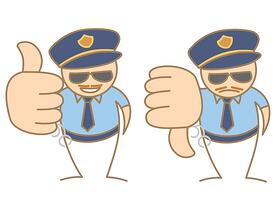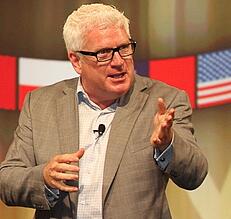Leadership Communication
with Good Cop, Bad Cop 2.0
 The classic good cop, bad cop routine can be a sufficient leadership communication tool with a room full of sales people or a teenager, flopped in a chair, tolerating an adult conversation. But it can be more than the 'bad cop' scaring your audience into action (which can work) or the 'good cop' engineering trust (which also works). With a Good Cop, Bad Cop 2.0 twist, facilitation for getting lasting results will happen. Here is how Good Cop, Bad Cop 2.0 can help as you advance leadership's vision.
The classic good cop, bad cop routine can be a sufficient leadership communication tool with a room full of sales people or a teenager, flopped in a chair, tolerating an adult conversation. But it can be more than the 'bad cop' scaring your audience into action (which can work) or the 'good cop' engineering trust (which also works). With a Good Cop, Bad Cop 2.0 twist, facilitation for getting lasting results will happen. Here is how Good Cop, Bad Cop 2.0 can help as you advance leadership's vision.
Here at the Big Goals Fast Institute we have a client with a sales force of 15,000. Their turnover was higher than they wanted and their front-line leaders were seemingly passive due to a string of changes and growing pains. Getting the attention of the front-line leaders was increasingly frustrating for the C-Suite.
In a planning session for an executive retreat I noticed every leader's communication was encouraging and supportive. Everyone was being a 'good cop.' Being the outside voice it became clear my role would be to challenge the leaders... all of them! From a revenue standpoint it would be a gamble for my company. Cheese off certain people and I would get our services contract canceled.
But truth is always more important than fear of loss.
The fear of loss reaction can be a fresh wound. A few years prior, we were hired by a CEO to find out what the problem was at their firm. When our report came back outlining the distance between the C-Suite and management, the CEO didn't like the truth. He indeed couldn't "handle the truth." Leadership by walking around would have solved the problem but he maintained he needed to have a separate office complex from the rest of the company. By the way, we didn't get the contract and that company eventually self-destructed.
Back to our 'good cop/bad cop' situation.
When the retreat's leadership communication began there was short welcome speech by the President then I was called on stage. For fifteen minutes the cold truth was laid out. I couldn't understand why, after working with them for a year, there was minimal ownership and engagement. It didn't make sense to be a high-performance consultant yet be saddled with a stagnant, wait-and-see attitude. It became clear that either things would change, attitudes would improve, engagement would increase or yours truly had more ambitious companies to be associated with.

A quiet fell over the room. Then, one after another, front-line leaders began to speak up. There was intense emotion and heartfelt admission "things needed to change." There were even tears. One after another, leaders began to engage with ideas we espouse, "Do what the competition is not willing to do." The founders reached out in a way they never had before. The C-suite was able to focus their time on building rather than surviving. Best of all, the front-line leaders made a commitment to eachother of how they would show up.
At that point I was able to switch the leadership communication into 'Good Cop, Bad Cop 2.0' and help them map out the next twelve months. In less than a year, they have enjoyed double digit growth and attracted a more dedicated work force.
Things to remember about Good Cop, Bad Cop 2.0:
- It is better for an outside voice to tell cold facts. He or she can be the hard-ass where the team rallies around the internal leadership.
- You do not have to scare your people into action. The truth will do that.
- Follow up the truth with a Buy-In Action Plan. Your team will gel from this.
- 2.0 is not manipulative, it is a reality check with a solution attached.
If you are ready for leadership communication that delivers growth results, employ a Good Cop, Bad Cop 2.0 approach.





